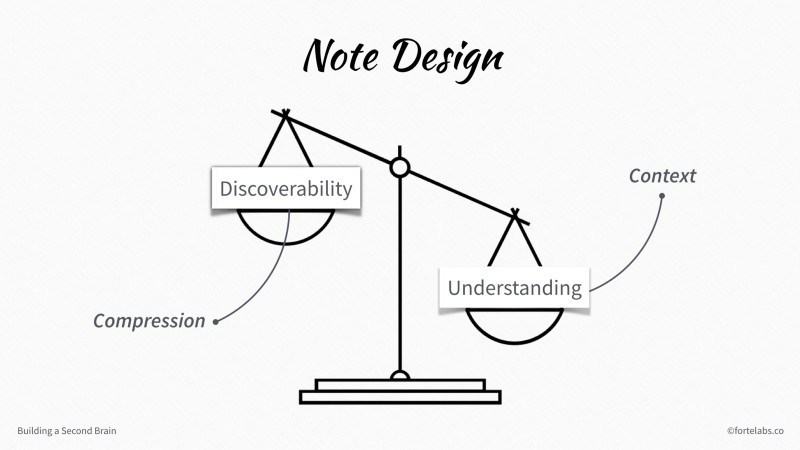Is Progressive Summarization a Waste of Time?
Is the process of bolding and highlighting notes a waste of time? Would you be better off spending that time thinking instead of collecting?
Progressive Summarization is a technique for processing notes. Invented in 2017 by Tiago Forte, the process looks something like this:
- Layer 1: Notes
- Layer 2: Bold Passages
- Layer 3: Highlighted Passages
- Layer 4: Mini-summary
- Layer 5: Remix
Each note is treated with multiple passes as needed.
Potential drawbacks of Progressive Summarization
Just looking at the methodology of PS, some potential drawbacks come to mind.
First is the use of bolding and highlighting. In my college writing class the TA had us throw all of our highlighters in the trash. Why? Because highlighting doesn’t help you learn or remember information. This has been well studied in the literature, highlighting doesn’t help you learn.

Second, collecting material can feel more useful than it is. What if all this collecting and highlighting of notes makes us feel good, but doesn’t help us produce anything?
So, is PS a waste of time? Nick Milo certainly thinks so. In his article titled: “Why Progressive Summarization Must Die”, Milo points out these flaws and more.
Milo argues that Progressive Summarization doesn’t help with thinking–that PS users will become parrots, simply regurgitating ideas from articles they read. He would prefer a system where thinking is given more emphasis.
He also argues that bolding and highlighting is a waste of time. Instead of making multiple passes on an article or a book, you could use that time to think your own thoughts or make connections between ideas.
But there’s a problem with all of the above critiques: they entirely miss the point of Progressive Summarization.
Why are you using Progressive Summarization?
Progressive Summarization is not a tool for improving memory, and it is not a tool for thinking.
It says right in the title of Tiago’s original PS post: “A Practical Technique for Designing Discoverable Notes”. It does not say: “A Practical Technique for Thinking Better”.
PS is a tool for reducing waste. It’s a tool for collecting, filtering, surfacing and resurfacing the best ideas with as little effort as possible.
All note taking systems have to balance discoverability and understanding. More compression, easier discoverability. More context, easier understanding. But to compress something you have to lose some of its context.

PS solves this problem with its layers. The best ideas in a note are easy to spot–they’re in your mini-summary, or they’re bolded/highlighted to stand out. If you need more context, just drop down a layer.
Milo’s proposed replacement for PS does not solve this discoverability-vs-understanding problem.
Progressive Summarization Saves Time
How does PS save you time?
With PS, you don’t waste time processing low-value ideas. PS’s principle of opportunistic compression means you only touch a note when it’s relevant to a project you’re working on. In this way, PS creates discoverable and understandable notes with the minimum effort possible, just when you need them.
Second, each time you re-use a note it saves you time and gets more useful. Because the note is progressively summarized, you can get to the right level of context quickly. And while you’re there, might as well make a small improvement for next time.
As an example, I put together the outline for this article in just twenty minutes. This article was easier to write because I already had progressively summarized notes about highlighting, PS itself (Tiago’s post is 3,306 words!), and even Alex Milo’s own article.
Is Progressive Summarization a Waste of Time?
In short, no. If anything, PS will save you time.
I don’t mean to pile on Nick here. Nick’s post prompted interesting discussion, and gave us all opportunities to think about how and why to use different methods. Despite the clickbaity title, Nick has responded well to criticism and continues to contribute in good faith.
If PS doesn’t work for him, or for you, that’s totally fine.
Use the tools that work best for you and your goals.
Further Reading:
- Why Progressive Summarization Must Die - Nick Milo
- A Practical Technique for Designing Discoverable Notes - Tiago Forte
- Building a Second Brain + Smart Notes - My knowledge management workflow
- Absorb What is Useful, Discard What is Not
- Steal Like an Artist - Austin KLeon
Want to up your productivity but don’t know where to start?
Get the Digital Productivity Coach
The DPC is an interactive coach, available 24⁄7 to give you a feasible next step to improve your productivity skills.